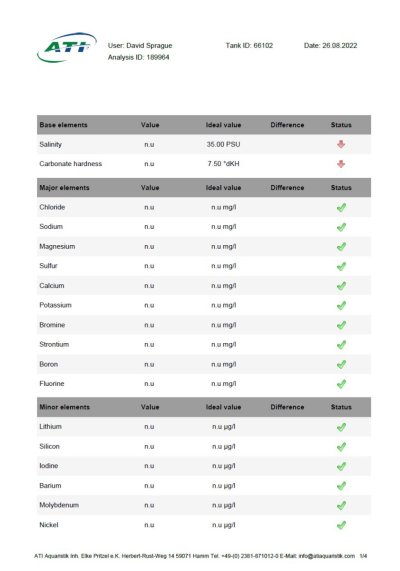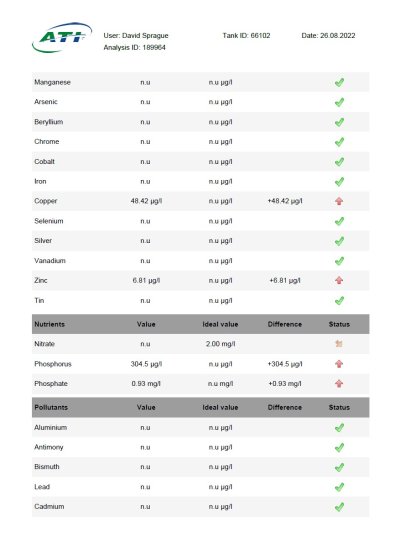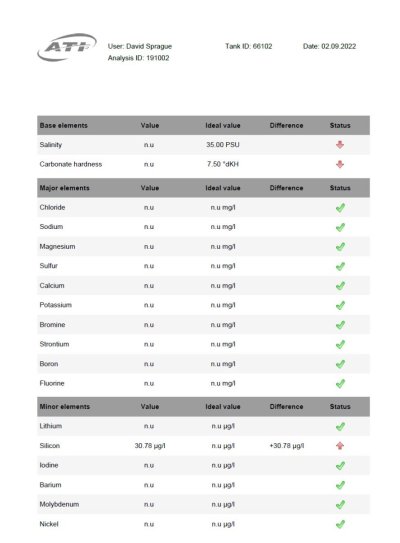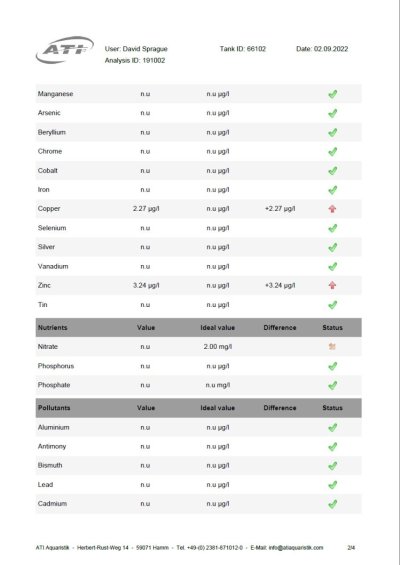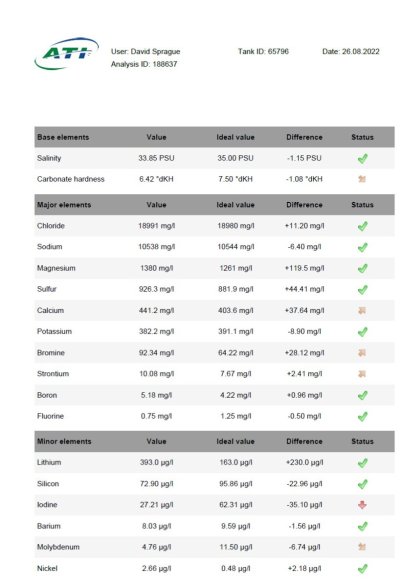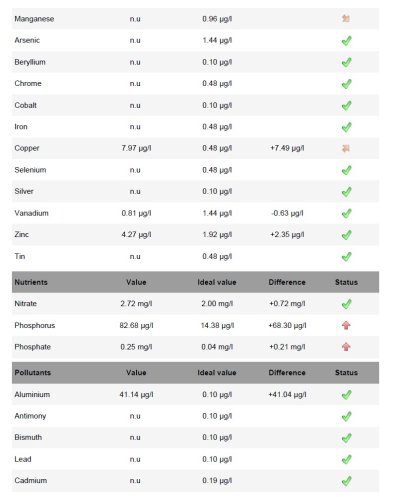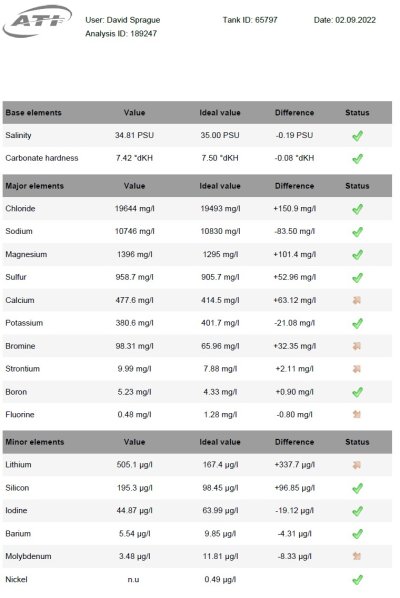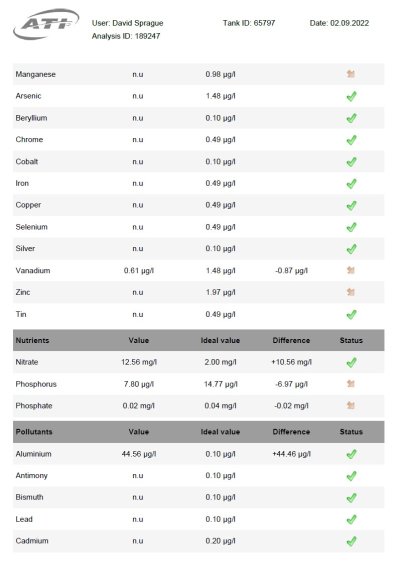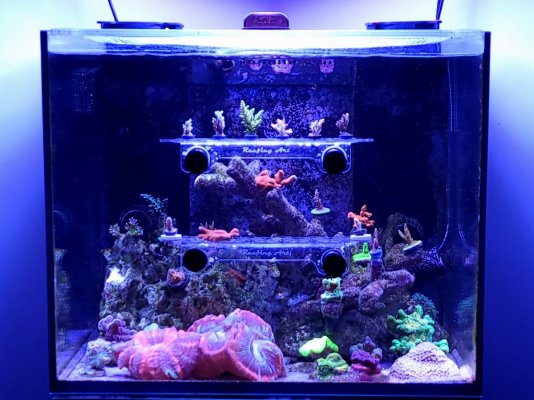Greetings all, I'm totally ignorant when it comes to chemistry so I'm seeking assistance from you knowledgeable folks to help with my first ATI ICP test results. A little background on why I had the test done. I have 2 tanks, a reefer 170 aprox 35g total volume that I am switching over to SPS from mostly LPS. My second tank is a 180g about 220g total with sump. Tank inhabitants are bubble tip nems , some monti caps, softies, and a few LPS along with fish. Everything is the 180g looks perfectly fine. What caused concern was when I moved some LPS from the reefer into the 180g to make room for the new rock work and SPS frags. Whenever I move one of my nice large LPS pieces into the 180g they deflate and look terrible. I have left them in for 2 weeks to give them a chance to adjust even tho lighting is almost identical and flow similar. Since they look so bad after a while rather than watch them die I move them back into the reefer and within 24 hours they inflate and look great. That leads me to think there may be something different in the water chemistry. The same RO water is used and changes are performed from the same batches of fresh salt mix. This test is from the 180g where the LPS suffer when placed into it from the reefer. I am awaiting test results on the reefer 170 where the LPS thrive. I am posting screen shots of the results that show concerns as my lack of knowledge prevents me from knowing if they are anything to worry about. I am also posting results of my RO water test that appears to have some concerns. I won't bother posting the pages of the results that were normal unless requested. Thanks to you all here that are willing to take your time helping others.
Thanks Alk is a little low but normally runs 7.5ish testing with Hanna. It did test 6.8 from the same sample I sent in to ATI. I'm not sure why it was low unless it was the time of day I tested as it was 5 hours earlier than I normally test. It tested at 7.7 four days later at my normal testing time. I dose kalk with a dosing pump, nothing else is added.
180g test results


RO water results

Thanks Alk is a little low but normally runs 7.5ish testing with Hanna. It did test 6.8 from the same sample I sent in to ATI. I'm not sure why it was low unless it was the time of day I tested as it was 5 hours earlier than I normally test. It tested at 7.7 four days later at my normal testing time. I dose kalk with a dosing pump, nothing else is added.
180g test results
RO water results
Last edited:








